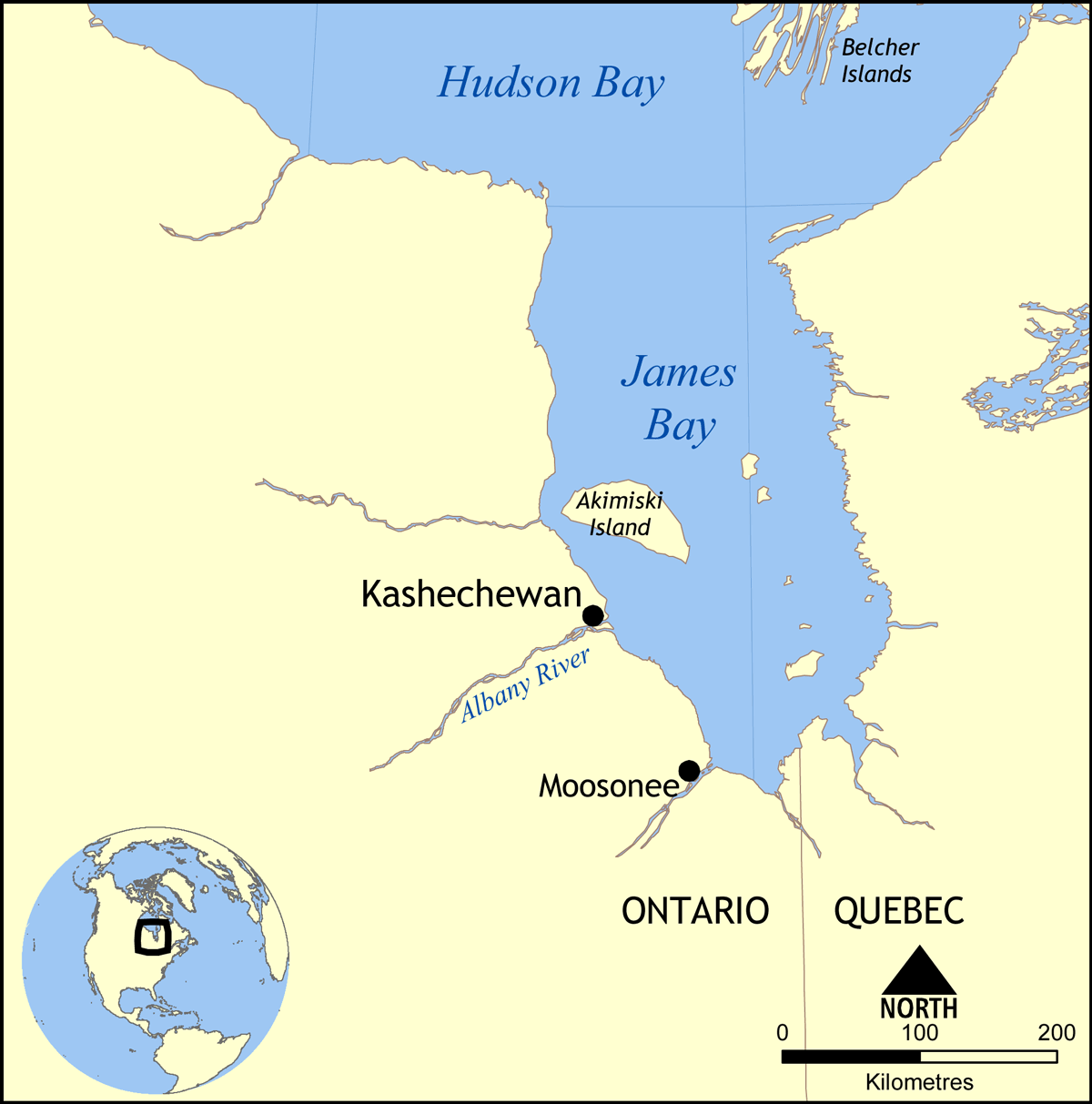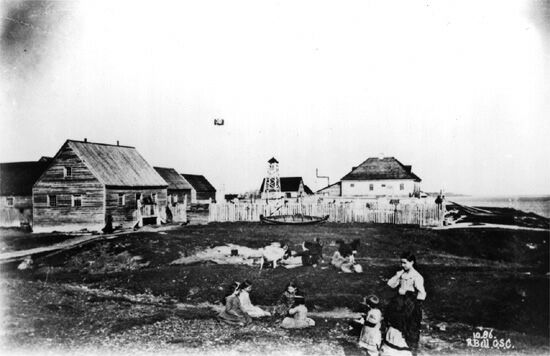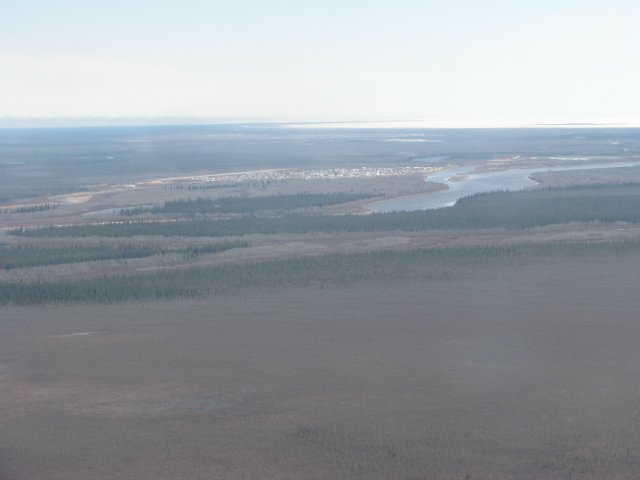|
Swampy Cree Language
Swampy Cree (variously known as Maskekon, Omaškêkowak, and often anglicized as Omushkego) is a variety of the Algonquian language, Cree. It is spoken in a series of Swampy Cree communities in northern Manitoba, central northeast of Saskatchewan along the Saskatchewan River and along the Hudson Bay coast and adjacent inland areas to the south and west, and Ontario along the coast of Hudson Bay and James Bay. Within the group of dialects called "West Cree", it is referred to as an "''n''-dialect", as the variable phoneme common to all Cree dialects appears as "n" in this dialect (as opposed to y, r, l, or ð; all of the phonemes are considered a linguistic reflex of Proto-Algonquian ''*r''). It had approximately 4,500 speakers in a population of 5,000 as of 1982 according to the 14th edition of the ''Ethnologue''. Canadian census data does not identify specific dialects of Cree (all estimates now current rely on extrapolations from specific studies), and currently, no accurate ce ... [...More Info...] [...Related Items...] OR: [Wikipedia] [Google] [Baidu] |
Canada
Canada is a country in North America. Its ten provinces and three territories extend from the Atlantic Ocean to the Pacific Ocean and northward into the Arctic Ocean, covering over , making it the world's second-largest country by total area. Its southern and western border with the United States, stretching , is the world's longest binational land border. Canada's capital is Ottawa, and its three largest metropolitan areas are Toronto, Montreal, and Vancouver. Indigenous peoples have continuously inhabited what is now Canada for thousands of years. Beginning in the 16th century, British and French expeditions explored and later settled along the Atlantic coast. As a consequence of various armed conflicts, France ceded nearly all of its colonies in North America in 1763. In 1867, with the union of three British North American colonies through Confederation, Canada was formed as a federal dominion of four provinces. This began an accretion of provinces an ... [...More Info...] [...Related Items...] OR: [Wikipedia] [Google] [Baidu] |
Ethnologue
''Ethnologue: Languages of the World'' (stylized as ''Ethnoloɠue'') is an annual reference publication in print and online that provides statistics and other information on the living languages of the world. It is the world's most comprehensive catalogue of languages. It was first issued in 1951, and is now published by SIL International, an American Christian non-profit organization. Overview and content ''Ethnologue'' has been published by SIL International (formerly known as the Summer Institute of Linguistics), a Christian linguistic service organization with an international office in Dallas, Texas. The organization studies numerous minority languages to facilitate language development, and to work with speakers of such language communities in translating portions of the Bible into their languages. Despite the Christian orientation of its publisher, ''Ethnologue'' isn't ideologically or theologically biased. ''Ethnologue'' includes alternative names and autonyms, the ... [...More Info...] [...Related Items...] OR: [Wikipedia] [Google] [Baidu] |
Alveolar Consonant
Alveolar (; UK also ) consonants are articulated with the tongue against or close to the superior alveolar ridge, which is called that because it contains the alveoli (the sockets) of the upper teeth. Alveolar consonants may be articulated with the tip of the tongue (the apical consonants), as in English, or with the flat of the tongue just above the tip (the "blade" of the tongue; called laminal consonants), as in French and Spanish. The International Phonetic Alphabet (IPA) does not have separate symbols for the alveolar consonants. Rather, the same symbol is used for all coronal places of articulation that are not palatalized like English palato-alveolar ''sh'', or retroflex. To disambiguate, the ''bridge'' (, ''etc.'') may be used for a dental consonant, or the under-bar (, ''etc.'') may be used for the postalveolars. differs from dental in that the former is a sibilant and the latter is not. differs from postalveolar in being unpalatalized. The bare letters , etc. ... [...More Info...] [...Related Items...] OR: [Wikipedia] [Google] [Baidu] |
Bilabial Consonant
In phonetics, a bilabial consonant is a labial consonant articulated with both lips. Frequency Bilabial consonants are very common across languages. Only around 0.7% of the world's languages lack bilabial consonants altogether, including Tlingit, Chipewyan, Oneida, and Wichita. Varieties The bilabial consonants identified by the International Phonetic Alphabet (IPA) are: Owere Igbo has a six-way contrast among bilabial stops: . Other varieties The extensions to the IPA also define a () for smacking the lips together. A lip-smack in the non-percussive sense of the lips noisily parting would be .Heselwood (2013: 121) The IPA chart shades out ''bilabial lateral consonants'', which is sometimes read as indicating that such sounds are not possible. The fricatives and are often lateral, but since no language makes a distinction for centrality, the allophony is not noticeable. See also * Place of articulation In articulatory phonetics, the place of articulation (also ... [...More Info...] [...Related Items...] OR: [Wikipedia] [Google] [Baidu] |
Consonant
In articulatory phonetics, a consonant is a speech sound that is articulated with complete or partial closure of the vocal tract. Examples are and pronounced with the lips; and pronounced with the front of the tongue; and pronounced with the back of the tongue; , pronounced in the throat; , and , pronounced by forcing air through a narrow channel (fricatives); and and , which have air flowing through the nose ( nasals). Contrasting with consonants are vowels. Since the number of speech sounds in the world's languages is much greater than the number of letters in any one alphabet, linguists have devised systems such as the International Phonetic Alphabet (IPA) to assign a unique and unambiguous symbol to each attested consonant. The English alphabet has fewer consonant letters than the English language has consonant sounds, so digraphs like , , , and are used to extend the alphabet, though some letters and digraphs represent more than one consonant. For example, th ... [...More Info...] [...Related Items...] OR: [Wikipedia] [Google] [Baidu] |
Kashechewan
The Kashechewan First Nation (, cr, ᑫᔒᒋᐗᓐ ᐃᓕᓕᐗᒃ, kêšîciwan ililiwak) is a Swampy Cree, Cree First Nations in Canada, First Nation band government located near James Bay in Northern Ontario, Canada. The community is located on the northern shore of the Albany River. Kashechewan First Nation is one of two communities that were established from Old Fort Albany (now the Fort Albany First Nation, Fort Albany 67 Indian Reserve) in the 1950s. The other community is Fort Albany First Nation, which is now located on the southern bank of the Albany River. The community is connected to other towns along the shore of James Bay by the seasonal ice road/winter road, linking it to the towns of Attawapiskat, Ontario, Attawapiskat, Fort Albany, Ontario, Fort Albany, and Moosonee, Ontario, Moosonee. Kashechewan is policed by the Nishnawbe-Aski Police Service, an Aboriginal-based service. A fire at the detachment on January 9, 2006, severely injured an officer and killed ... [...More Info...] [...Related Items...] OR: [Wikipedia] [Google] [Baidu] |
Moose Cree Language
Moose Cree is a dialect of the Cree language spoken mainly in Moose Factory, Ontario. Classification As a dialect of the Cree language, Moose Cree is classified under the Algonquian branch of the Algic language family. Name The term ''Moose Cree'' is derived either from the toponym , meaning 'Moose Island' or , meaning 'Moose River'. The former is the historical name for the summering grounds of the speakers of this dialect, but has been appropriated by the modern municipality of Moosonee, leaving the island with the official English name of Moose Factory, a name that recalls the historical presence of a Hudson's Bay trading post, originally called 'factories'. The above-mentioned hydronym refers to the river where the said island is located.Kevin Brousseau, 2015. ''A Dictionary of Moose Cree. '' 2nd edition. Moose Factory: Moose Cree First Nation. Speakers of the dialect refer to the language as . Official status In Ontario, the Cree language has no official status. ... [...More Info...] [...Related Items...] OR: [Wikipedia] [Google] [Baidu] |
Fort Albany, Ontario
Fort Albany First Nation ( cr, ᐲᐦᑖᐯᒄ ᐃᓕᓕᐗᒃ pîhtâpek ililiwak, "lagoon Cree") is a Cree First Nation in Cochrane District in Northeastern Ontario, Canada, within the territory covered by Treaty 9. Situated on the southern shore of the Albany River, Fort Albany First Nation is accessible only by air, water, or by winter road. The community is policed by the Nishnawbe-Aski Police Service, an Aboriginal-based service. It shares the Fort Albany 67 Indian Reserve with the Kashechewan First Nation, which officially separated from Fort Albany First Nation in 1977. Fort Albany First Nation controls the Fort Albany Indian Settlement on the south shore of the Albany River, and the Kashechewan First Nation controls the Kashechewan Indian Settlement directly across the river. Fort Albany was established in 1679 as one of the oldest and most important of Hudson's Bay Company posts. It was also involved in Anglo-French tensions leading to the Battle of Fort Albany in 16 ... [...More Info...] [...Related Items...] OR: [Wikipedia] [Google] [Baidu] |
Kashechewan First Nation
The Kashechewan First Nation (, cr, ᑫᔒᒋᐗᓐ ᐃᓕᓕᐗᒃ, kêšîciwan ililiwak) is a Cree First Nation band government located near James Bay in Northern Ontario, Canada. The community is located on the northern shore of the Albany River. Kashechewan First Nation is one of two communities that were established from Old Fort Albany (now the Fort Albany 67 Indian Reserve) in the 1950s. The other community is Fort Albany First Nation, which is now located on the southern bank of the Albany River. The community is connected to other towns along the shore of James Bay by the seasonal ice road/winter road, linking it to the towns of Attawapiskat, Fort Albany, and Moosonee. Kashechewan is policed by the Nishnawbe-Aski Police Service, an Aboriginal-based service. A fire at the detachment on January 9, 2006, severely injured an officer and killed two inmates as they could not be rescued. [...More Info...] [...Related Items...] OR: [Wikipedia] [Google] [Baidu] |
Attawapiskat First Nation
The Attawapiskat First Nation ( Cree: , "People of the parting of the rocks"; unpointed: ) is an isolated First Nation located in Kenora District in northern Ontario, Canada, at the mouth of the Attawapiskat River on James Bay. The traditional territory of the Attawapiskat First Nation extends beyond their reserve up the coast to Hudson Bay and hundreds of kilometres inland along river tributaries. The community is connected to other towns along the shore of James Bay by the seasonal ice road/winter road constructed each December, linking it to the towns of Kashechewan First Nation, Fort Albany, and Moosonee (Minkin 2008:1) Attawapiskat, Fort Albany, and Kashechewan operate and manage the James Bay Winter Road through the jointly owned Kimesskanemenow Corporation, named after the Cree word for "our road" -''kimesskanemenow''. Attawapiskat is the most remote northerly link on the road to Moosonee. They control the reserves at Attawapiskat 91 and Attawapiskat 91A. Etymology ... [...More Info...] [...Related Items...] OR: [Wikipedia] [Google] [Baidu] |
Weenusk First Nation
Weenusk First Nation ( cr, ᐐᓈᐢᑯ ᐃᓂᓂᐗᐠ, italic=no (); unpointed: ᐧᐃᓇᐢᑯ ᐃᓂᓂᐧᐊᐠ) is a Cree First Nation band government in the Canadian province of Ontario. In September, 2007, its total registered population was 516. Weenusk First Nation was an independent member of the Nishnawbe Aski Nation (NAN) but now have joined the Mushkegowuk Council, a regional tribal council, who is also a member of NAN. Weenusk First Nation's reserve is the 5310 ha Winisk Indian Reserve 90. Associated with the reserve is their Winisk Indian Settlement also known as Peawanuck, which also holds reserve status. Originally, the Weenusk First Nation was located within their reserve, but they were forced to move southwest to Peawanuck when on May 16, 1986, spring floods swept away much of the original settlement, which had been located upriver from Hudson Bay. In the Cree language, "Peawanuck" means "a place where flint is found," while "Weenusk" means "ground hog." ... [...More Info...] [...Related Items...] OR: [Wikipedia] [Google] [Baidu] |
Fort Severn First Nation
Fort Severn First Nation ( [] in Swampy Cree language, Cree) is a Western Swampy Cree First Nations in Canada, First Nation band government located on Hudson Bay and is the most Extreme communities of Canada, northern community in Ontario, Canada. In 2001, the population was 401, consisting of 90 families in an area of 40 square kilometres. The legal name of the reserve is Fort Severn 89, with the main settlement of Fort Severn ( []). The town is linked by a winter road, winter/ice road called the Wapusk Trail during the winter to Peawanuck, Ontario, in the east, and Shamattawa, Manitoba, Shamattawa and Gillam, Manitoba, to the west. Fort Severn is policed by the Nishnawbe-Aski Police Service, an Indigenous-based service. History This area was inhabited for thousands of years by varying cultures of indigenous peoples. At the time of European contact, the historic Swampy Cree, an Algonquian languages, Algonquian-speaking people, lived in the area. In 1689 the Hudson's Bay Co ... [...More Info...] [...Related Items...] OR: [Wikipedia] [Google] [Baidu] |



